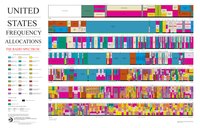
Photo from wikipedia
Virtual primary frequency regulation (VPFR) is a coordinated demand and generation response, which is proposed to counteract post-disturbance frequency fluctuations and deviations. But meanwhile, it also influences oscillation stability. VPFR’s… Click to show full abstract
Virtual primary frequency regulation (VPFR) is a coordinated demand and generation response, which is proposed to counteract post-disturbance frequency fluctuations and deviations. But meanwhile, it also influences oscillation stability. VPFR’s continuity, slope and response time are three characteristics that have large influences on oscillation stability. Due to uncertainties of these characteristics, VPFR’s influences are nondeterministic and random. In order to analyze them, first, VPFR is modeled and combined with existing models of power systems for eigenvalue analysis. The repeated LHS method is developed to more efficiently sample uncertainties. Eigenvalue analysis is repeatedly made for each sampling to estimate mean values of participation factors and distributions of damping ratios for critical modes. The former indicate where VPFR increases system damping, where not. The latter show the influences of regulation parameters on damping ratios for VPFR at a selected location. Utilizing this statistical information, system operators can select VPFR’s locations and parameters through price signals to improve system damping. Two test cases on a 16-generator, 68-bus system show that VPFR implemented in this way can improve oscillation stability as well as frequency stability. Finally, VPFR’s performance is further investigated with motor-type loads.
Journal Title: IEEE Transactions on Smart Grid
Year Published: 2018
Link to full text (if available)
Share on Social Media: Sign Up to like & get
recommendations!